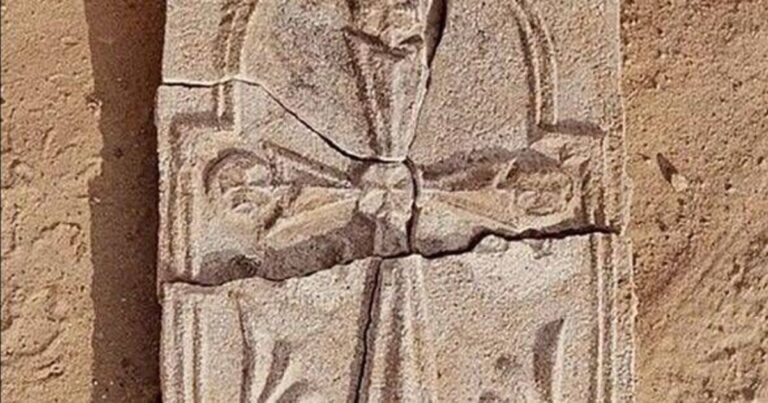A 1,400 year old plaque showing a cross is transforming experts’ comprehension of Christianity’s eastward expansion.
Researchers excavating Abu Dhabi’s Sir Bani Yas Island discovered the artifact, which displays a stepped pyramid reminiscent of Golgotha – the site where Christians believe Jesus was crucified – with foliage emerging from its foundation, according to the Daily Mail.
The relic was unearthed within the remains of a church and monastery, indicating a Christian settlement that thrived on the island throughout the seventh and eighth centuries. The discovery emerges as the Turin Shroud enigma was reportedly ‘resolved’ by an expert who claims to have identified Christ’s blood type.
Early Christians
Christianity during this era is commonly linked with the Levant, Mesopotamia and portions of Europe, making proof of a prosperous community on a southeastern Arabian Gulf island both surprising and historically important, reports the Express.
Simultaneously, the area was experiencing dramatic religious transformation as Islam was emerging and expanding swiftly throughout Arabia, while ancient pagan customs persisted and Christianity was believed to be declining.
Nevertheless, the existence of a thriving Christian colony here contradicts that belief.
Christianity flourished
Maria Gajewska, chief archaeologist at the location, stated: “Every element of the cross incorporates regional motifs.
“It tells us that Christianity in this region was not only present but flourished, adapting visually to its local context. We had settlements of Christians that were not just existing but were clearly thriving.”
Mohamed Khalifa Al Mubarak, chairman of the Department of Culture and Tourism, described the discovery as “a powerful testament to the UAE’s profound and enduring values of coexistence and cultural openness,” adding that the find highlights a history of peaceful religious diversity in the region.
Sacred artifact
This season’s dig also revealed pottery, glass artifacts and a small sea-green bottle that may have contained oil or rosewater.
The cross measures approximately 10.6 inches in length, 6.7 inches in width and roughly 0.8 inches in thickness.
Researchers believe it could have served as a sacred artifact, displayed on a wall with believers kneeling in prayer before it.
Hager Al Menhali, an Emirati archaeologist at the department, told The National: “The plaster was resting face down and something about it caught my attention.”
She noted a “distinct fingerprint on the back,” speculating it was left by the person who crafted the stucco plaque.
Church of the East
Upcoming research will include radiocarbon dating and additional exploration of the courtyard houses, which could eventually be incorporated into a broader visitor trail. “These discoveries deepen our connection to the past and inspire future generations to embrace the spirit of unity and mutual respect that has long defined our community,” Al Mubarak said.
Findings from the dig indicated that high-ranking monks likely resided in the courtyard structures, making their way to the church for worship or utilizing the areas for spiritual reflection.
The well-constructed buildings, crafted from limestone and coral with water storage cisterns, suggest a comfortable lifestyle rather than a strictly ascetic existence.
The Christian congregation was part of the Church of the East, a denomination that extended from the Middle East all the way to China.
The Sir Bani Yas find provides an extraordinary window into how Christianity not only endured but flourished eastward, connecting Arabian Gulf settlements to the broader narrative of the religion’s expansion toward India and Asia.
Sir Bani Yas
Signs of a church and monastery on Sir Bani Yas, tracing back to the seventh and eighth centuries, were initially unearthed in the early 1990s.
A second monastery, presumably connected to the same church, was found on an island in Umm Al Quwain in 2022. Comparable locations have been located in Kuwait, Iran and Saudi Arabia.
Researchers continue examining why the Sir Bani Yas community went into decline.
The church is thought to have been fracturing prior to Islam’s emergence, plagued by internal divisions as competing factions pursued autonomy. However, historical records indicate that early Christian and Islamic communities in the area had peaceful interactions and trade relations.
To date, no external event has been pinpointed as the reason for the site’s desertion.
Archaeologists noted the remarkable cleanliness of the buildings, with minimal signs of collapse or debris. This implies that the inhabitants might have left voluntarily, intending to come back, rather than being driven away by a catastrophe or conflict.


